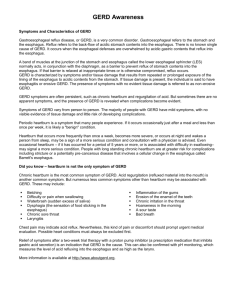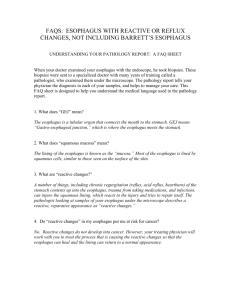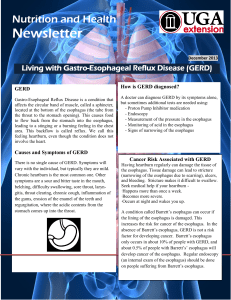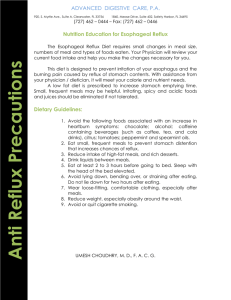lec8.1
advertisement
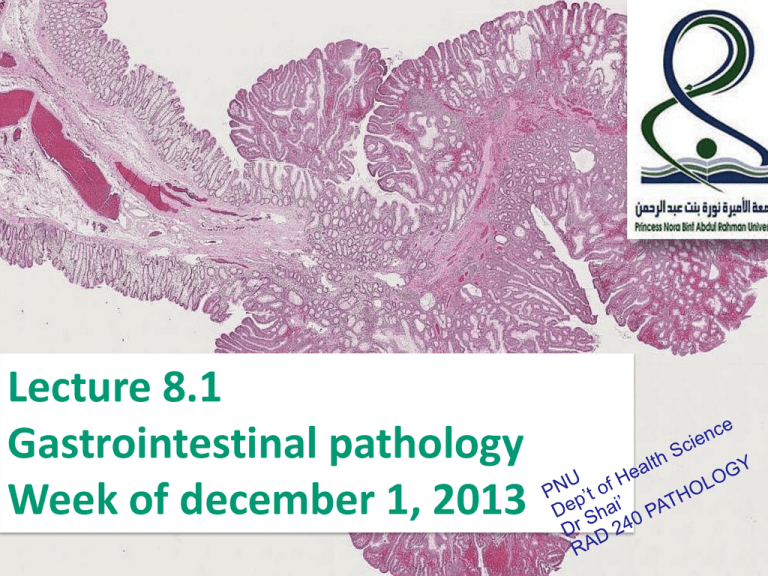
Lecture 8.1 Gastrointestinal pathology Week of december 1, 2013 GI overview • ESOPHAGUS • STOMACH • SMALL/LARGE BOWEL • APPENDIX, PERITONEUM OESOPHAGUS • Congenital Anomalies • Achalasia • Hiatal Hernia • Diverticula • Laceration • Varices • Reflux • Barretts • Esophagitis • Neoplasm: Benign, Sq. Cell Ca., Adenoca. ANATOMY • 25 cm. • UES/LES • Upper and lower esophageal sphincter • Mucosa/Submucosa/Muscularis/Adventitia* Inf. Thyroid Arts. R. Bronch. Art. Thoracic. Aor. Variations: Inf, Phrenic Celiac Splenic Left Gastric Art. Short Gast. DEFINITIONS • Heartburn (GERD/Reflux) • Dysphagia • Hematemesis • Esophagospasm (Achalasia) CONGENITAL ANOMALIES • ECTOPIC TISSUE (gastric, sebaceous, pancreatic) • Atresia/Fistula/Stenosis/”Webs” • Schiatzki “Ring” in lower esophagus MOST COMMON MOTOR DISORDERS • Achalasia • Hiatal Hernia (sliding [95%], paraesophageal) • “ZENKER” diverticulum • Esophagophrenic diverticulum • Mallory-Weiss tear ACHALASIA • “Failure to relax” – Aperistalsis – Incomplete relaxation of the LES – Increased LES tone • INCREASE: Gastrin, serotonin, acetylcholine, Prostaglandin F2α, motulin, Substance P, histamine, pancreatic polypeptide • DECREASE: N.O., VIP – Progressive dysphagia starting in teens – Mostly UNCERTAIN etiology HIATAL HERNIA • Diaphragmatic muscular defect • WIDENING of the space which the lower esophagus passes through • IN ALL cases, STOMACH above diaphragm • Usually associated with reflux • Very common Increases with age • Ulceration, bleeding, perforation, strangulation DIVERTICULA • ZENKER (HIGH) • TRACTION (MID) • EPIPHRENIC (LOW) • TRUE vs. FALSE? DIVERTICULUM LACERATION LONGITUDINAL (lower esophagus) Usually secondary to severe VOMITING Usually in ALCOHOLICS Usually MUCOSAL tears • Tears are • • • • By convention, they are all called: MALLORY-WEISS VARICES • THREE common areas of portal/caval anastomoses – Esophageal – Umbilical – Hemorrhoidal • 100% related to portal hypertension • Found in 90% of cirrhotics • MASSIVE, SUDDEN, FATAL hemorrhage is the most feared consequence VARICES VARICES ESOPHAGITIS •GERD/Reflux Barrett’s •Barrett’s •Chemical •Infectious REFLUX/GERD • DECREASED LES tone • Hiatal Hernia • Slowed reflux clearing • Delayed gastric emptying • REDUCED reparative ability of gastric mucosa REFLUX/GERD • Inflammatory Cells –Eosinophils –Neutrophils –Lymphocytes • Basal zone hyperplasia • Lamina Propria papillae elongated and congested, due to regeneration REFLUX/GERD BARRETT’S ESOPHAGUS • Can be defined as intestinal metaplasia of a normally SQUAMOUS esophageal mucosa. The presence of GOBLET CELLS in the esophageal mucosa is DIAGNOSTIC. • SINGLE most common RISK FACTOR for esophageal adenocarcinoma • 10% of GERD patients get it • “BREACHED” G-E junction BARRETT’S ESOPHAGUS BARRETT’S ESOPHAGUS • INTESTINALIZED (GASTRICIZED) mucosa is AT RISK for glandular dysplasia. • Searching for dysplasia when BARRETT’s is present is of utmost importance • MOST/ALL adenocarcinomas arising in the esophagus arise from previously existing BARRETT’s
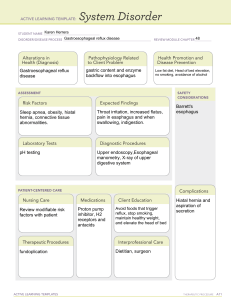
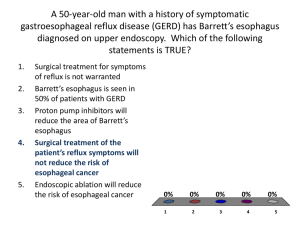
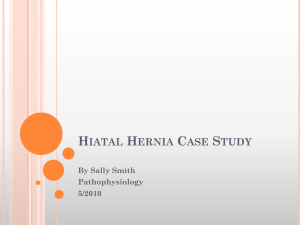
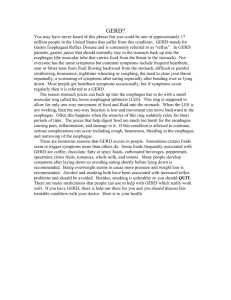
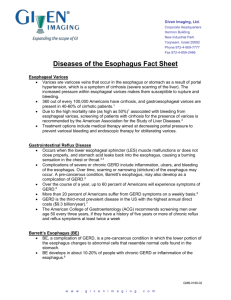
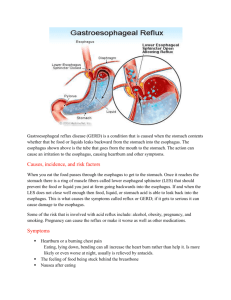
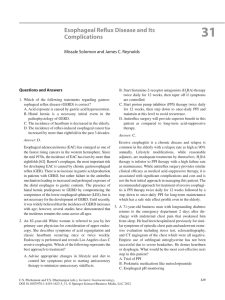
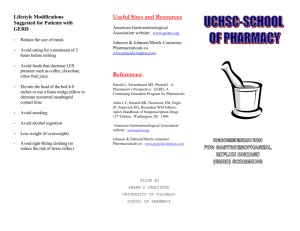
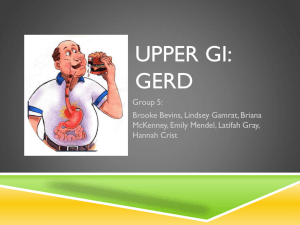
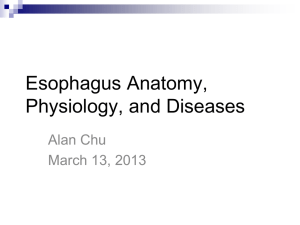
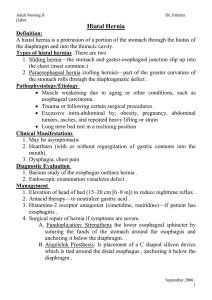
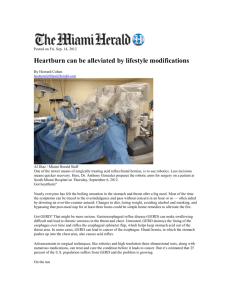
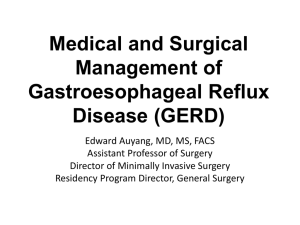
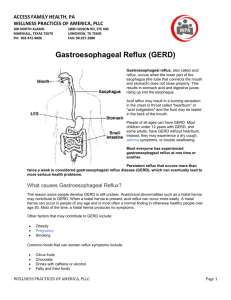

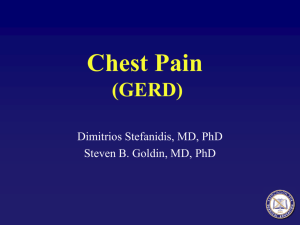
![EOSINOPHILIC ESOPHAGITIS [EE]](http://s3.studylib.net/store/data/009399872_1-fb87975e549aa57f606b438a42821700-300x300.png)
